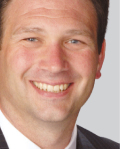High-functioning professional learning communities are challenging to accomplish and take dedication from all members of the school community. For staff to effectively collaborate, several things need to be in place—time to meet, group norms, data to analyze, and committed educators, to name a few. However, a critical step that is often overlooked is the need for educators to make the philosophical and cultural shift from teaching to learning.
DuFour, DuFour, and Eaker state in A Leader’s Companion, “One of the most important cultural shifts that must take place if schools are to perform as professional learning communities involves a shift from a primary focus on teaching to placing the primary focus on learning” (p. 49).
Historically, schools have functioned in a teacher-centric structure where educators dispensed knowledge and students were to act as sponges, absorbing everything that came their way. This type of structure was often good for the adult, but it didn’t have a lasting positive impact on learning for all students. If we are to ensure high levels of learning for all students, we must look ourselves in the mirror and decide if our school is benefiting the adults in the building or our students. We must ask: Was this physical structure built for adult employment or student learning? As educators, we owe it to future generations to begin functioning in collaborative teams to ensure learning for all students at high levels. This process begins by making the cultural shift from a focus on teaching to a focus on learning.
PLCs are student-centric and transparent. The following reflection questions will assist you on the journey to becoming a high-functioning PLC. Take a moment and reflect on the discussions you’ve had with your colleagues in the past week:
- What was the focus of your conversation?
- Did you discuss student data?
- Was there dialogue about how student needs are being met?
- Were you problem solving independently or interdependently?
- Do the adults or the students own assessment data?
- How do students interact with their assessment data?
- Do students track their own results or do they sit in the teachers’ grade book?
- Do you have a data wall with student pictures representing how they are performing on your collaboratively established common formative assessments?
- Is assessment data shared among the entire grade level/department?
- Are classrooms set up to accommodate student learning or teacher instruction?
- Does the interactive whiteboard function as a glorified overhead projector for the adults or have students utilized this tool in an interactive way?
- Does your support staff push-in to work with students or are students removed from the classroom to receive their additional instruction?
- Are all students taught by all teachers or, for example, do EL teachers only work with EL students?
Reference
Eaker, R., DuFour, R., & DuFour, R. (2007) A leader’s companion: Inspiration for professional learning communities at work®. Bloomington, IN: Solution Tree Press.
Posted in:
Tags:
Will Remmert
Will Remmert, is a principal, consultant, and holds a doctorate from the University of Minnesota in Organizational Leadership, Policy, and Development. He works with educators at all levels to implement and design proven practices and systems designed to enhance student and professional learning through the PLC at Work and RTI at Work processes.

